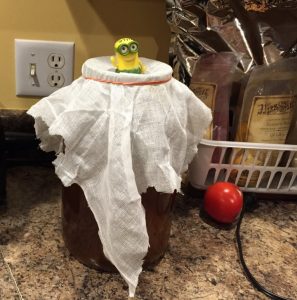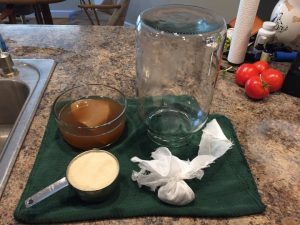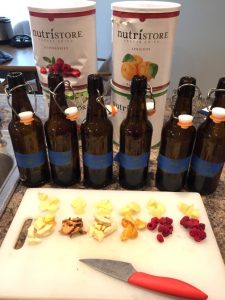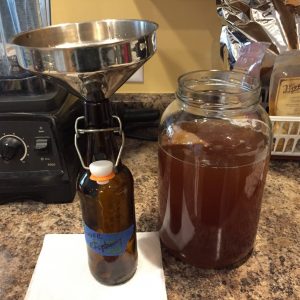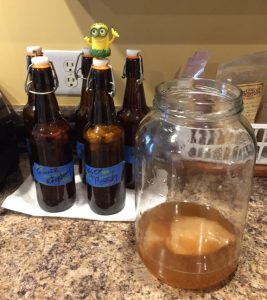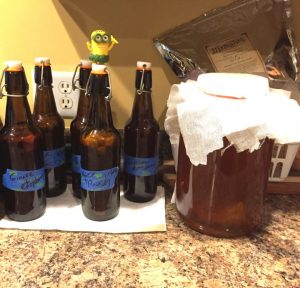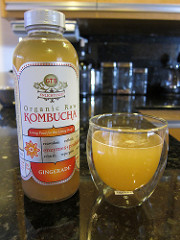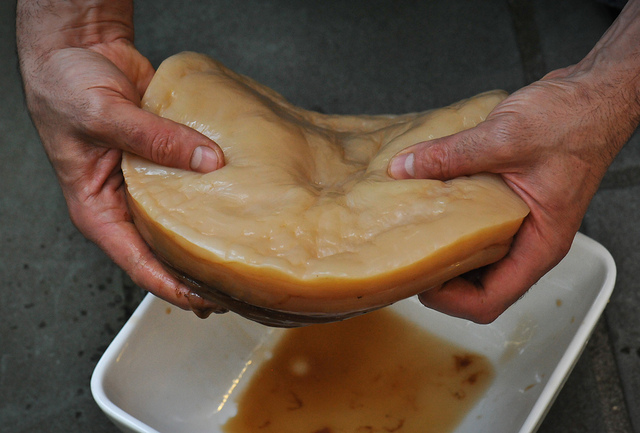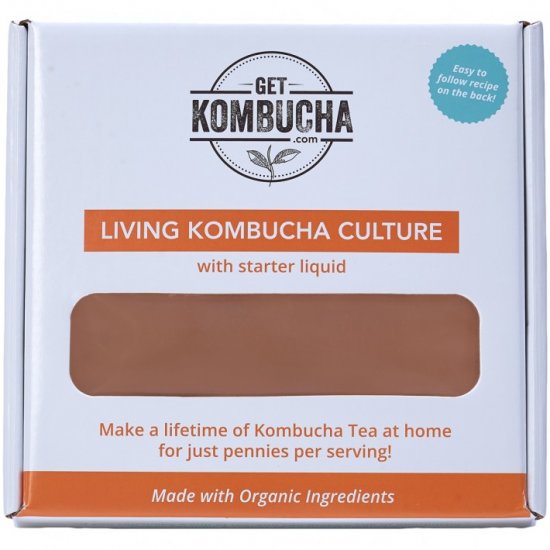(Our newest contributor, expert Kombucha maker Ron Chapdelaine, check him out on Facebook – The STEALTH House Naked Kombucha Factory. Here he shares with us why we may think we’ve made our Kombucha just right, but have no fizz! No fizz means no fermentation. The answer may be in the bottles we are using. Have more questions for him, send them to us and we’ll get answers for you!)
Dear Kombucha lovers,
Jerri at Homesteader Supply suggested I write something related to kombucha so here is something useful that we can all benefit from.
How many of you keep your empty GT kombucha bottles for your own kombucha bottling needs? Is it a good idea to reuse GT kombucha bottles? The answer is yes and no…. Yes if you use GT caps and no if you switch to generic caps when the seal on the GT caps wear out (after about 2-4 batches). Understand that GT kombucha bottles and caps are 100% proprietary as noted by the GT kombucha stamping on the underside of the bottle. In short, like several of the big commercial kombucha companies, GT’s has a bottle engineer design a mold to very specific specs mandated by GT’s. The mold is built by a bottle manufacturer in China and the manufacturer who builds and owns the GT mold (GT does not own its own mold) uses it whenever GT’s places an order usually for 500,000 bottles per order. Once the order is placed, the bottles are created and shipped in a container from China to GT’s massive distribution center in California. You may ask why does GT’s kombucha go through the hassle of proprietary bottles? The short answer is so you don’t reuse its bottles.
The Glass Packaging Institute (GPI) is responsible for establishing uniform standards for glass neck finishes. All of the 38/400 replacement caps you purchase for your GT bottles are certified GPI; however, a proprietary bottle does have to be manufactured under GPI standards. Even though a 38/400 (neck diameter of 38mm and fits a bottle with a 400 GPI thread finish) after market GPI certified cap fits perfectly on a GT Dave proprietary bottle it does not mean it will provide a perfect seal crucial to maintaining kombucha natural carbonation during the curing period. In fact, a GPI 38/400 cap may seem to fit perfectly on a GT cap but it truthfully does not create a good seal because the diameter on a GT bottle is actually a tiny bit smaller than the standard GPI 38/400 bottle. Therefore, a GPI 38/400 cap actually has a tiny bit larger neck diameter so when you use an after market 38/400 GPI cap, it is slightly larger that GT’s so carbonation will seep out during curing time and within a few days your kombucha will be totally flat never able to cure properly making all your hard work a lost effort which is what GT wants.
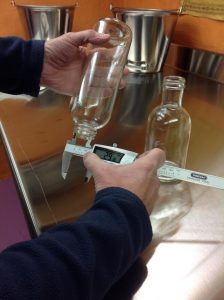
GT’s knows this and that is one reason why they have proprietary bottles. They would rather waste resources and landfill real estate than have you reuse its bottles. See two attached pictures – one measuring the inside diameter of a GT kombucha bottle @ 29.18 and the other measuring the inside diameter of a GPI 38/400 standard bottle @ 30.09. Notice the GPI certified 38/400 bottle is slightly larger in diameter than the GT proprietary bottle. When your GT caps wear out and you use GPI 38/400 caps that are designed for a 30.09 neck they are too large for a GT Dave 29.18 neck so carbonation will leak out quite quickly. You may say the difference is not material but it is material….try sticking a pin through the sidewall of your tire. Now you have a slow leak and within a short amount of time your tire will be flat. My advice is to avoid GT kombucha bottles and to purchase your own bottles certified GPI. A good place to purchase your own bottles is Filmore Bottle in PA, Burch Bottle in NY or SKS Packaging.
You will have a peace of mind that whatever cap type you use, it will be designed for your bottle ensuring your carbonation stays intact. I welcome your comments.
Enjoy and have fun!
Ron Chapdelaine
Visit him on Facebook – The STEALTH House Naked Kombucha Factory
Click here to get Kombucha supplies!
Want to buy Ron’s Kombucha? Contact him on his facebook page!

